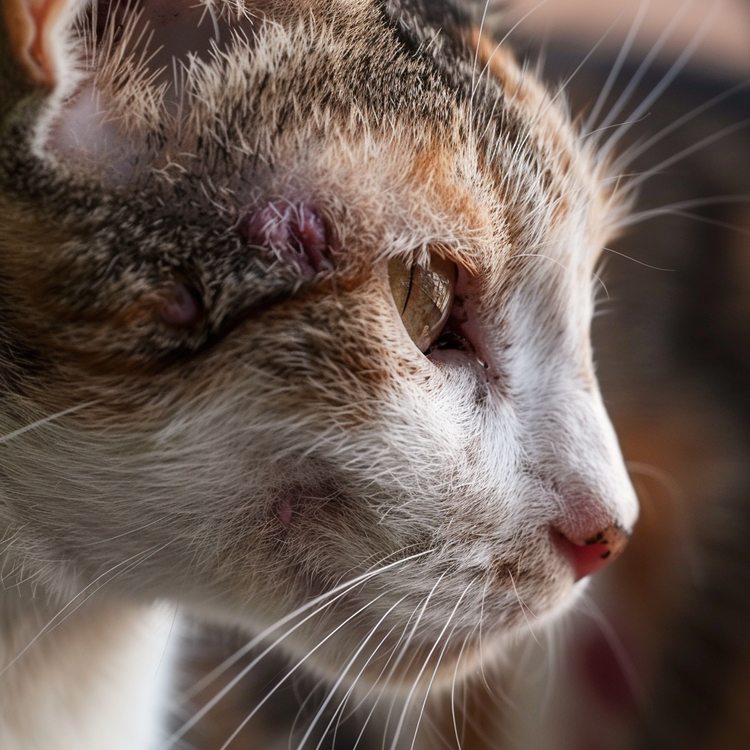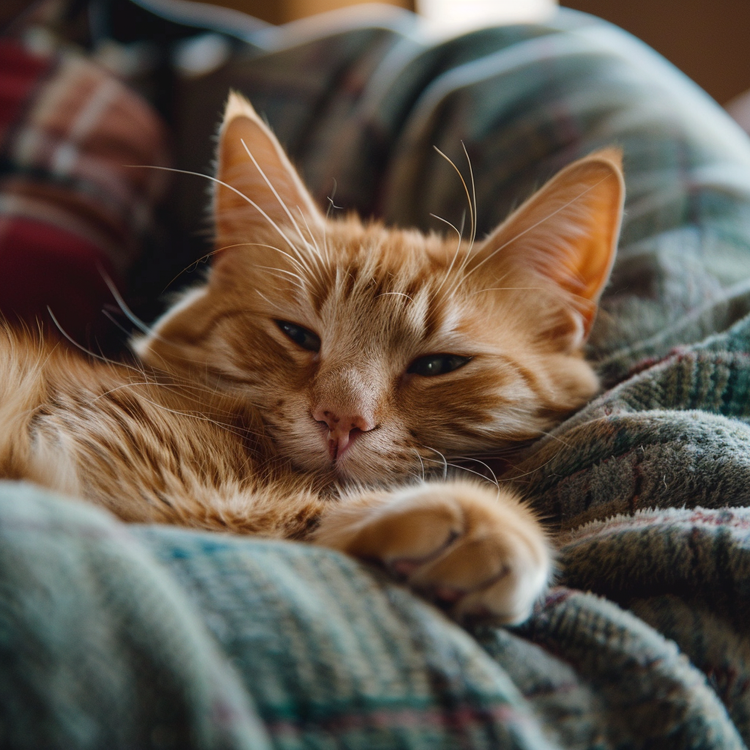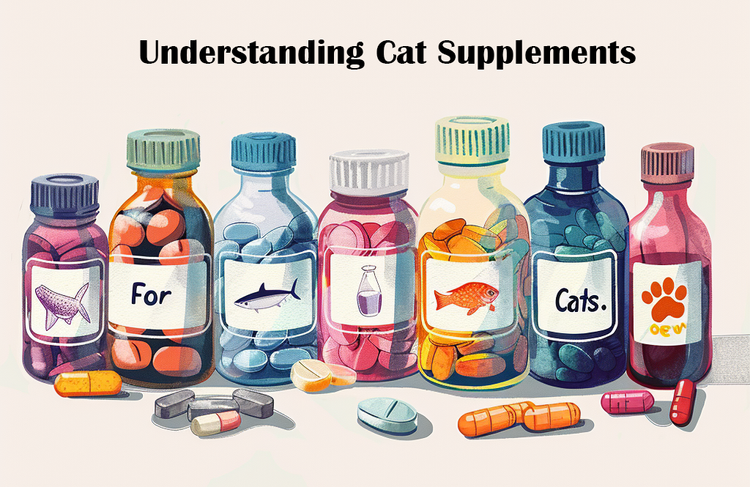Wet vs. Dry Cat Food: Finding the Best Diet for Your Feline
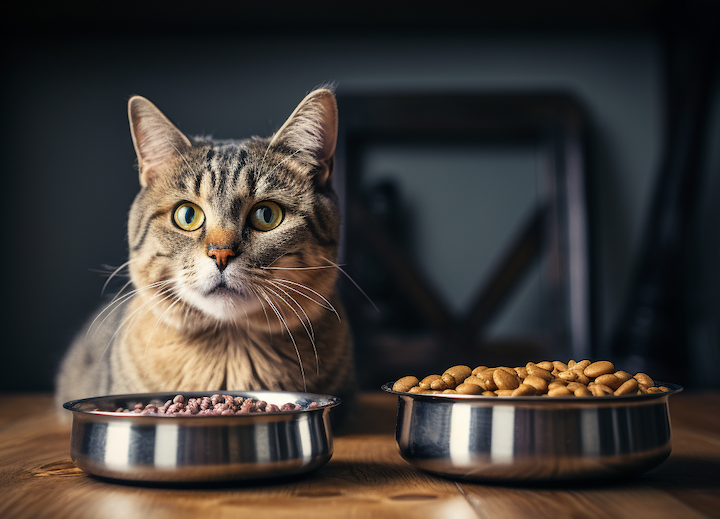
- Understanding Dry Cat Food
- Making the Choice: Factors to Consider
- The Hybrid Approach: Combining Wet and Dry Foods
- Conclusion
Deciding between wet and dry cat food can feel like navigating a maze without a clear exit. This choice is more than just about satisfying the picky palate of our feline companions; it's a critical decision that plays a pivotal role in their health, hydration, and overall well-being. With the myriad options available on the market, pet owners are often left pondering which path leads to the optimal nourishment for their beloved cats. The importance of this decision cannot be overstated, as the type of food you choose can have long-lasting effects on your pet's quality of life.
In this comprehensive guide, we delve deep into the world of cat nutrition, laying out the benefits and drawbacks of both wet and dry cat foods. Our objective is clear: to arm you, the cat owner, with the knowledge and insights needed to make an informed decision. By exploring the nutritional value, convenience, and cost-effectiveness of each option, we aim to help you determine the best dietary choice for your furry friend's unique needs. Join us as we embark on this journey to uncover the secrets of cat food, ensuring your pet thrives in health and happiness.
Understanding Wet Cat Food
Wet cat food, typically served in cans, pouches, or trays, is known for its high moisture content, usually ranging around 75% to 85%. This type of food closely mimics the natural diet of cats in the wild, providing a texture and hydration level that's inherently appealing to our domestic felines. Wet food's consistency varies from gravy-laden morsels to finely ground patés, catering to the diverse preferences of cats across all life stages.
Pros of Wet Cat Food
Choosing wet cat food for your feline companion offers a multitude of benefits that go beyond mere taste preference. This section delves into why wet food is not just a culinary delight for your pet but a cornerstone for their health and well-being.
- High Moisture Content: Wet cat food contains approximately 75% moisture, effectively hydrating your cat and promoting kidney health.
- Improved Hydration: Cats often have a low thirst drive, making wet food an excellent choice to ensure they stay adequately hydrated.
- Urinary Health: Adequate hydration from wet food can help prevent urinary tract issues in cats.
- Palatability: Wet cat food offers rich flavors and varied textures, making it highly palatable and suitable for even the pickiest eaters.
- Appetite Stimulation: It can be particularly beneficial for cats with diminished appetites, ensuring they receive the necessary nutrients for their health.
In summary, wet cat food stands out for its ability to keep cats well-hydrated, support urinary health, and satisfy even the fussiest eaters with its delicious flavors and textures. Making wet food a part of your cat's diet can contribute to their overall health and vitality.
Cons of Wet Cat Food
While wet cat food offers several advantages, it does have its drawbacks. Here are some key considerations:
- Higher Cost: One of the primary drawbacks of wet cat food is its cost. It tends to be considerably more expensive than dry cat food, which can strain the budget, particularly for households with multiple cats.
- Shorter Shelf Life: Once opened, wet cat food has a limited shelf life. It cannot be left out for extended periods, increasing the need for more frequent meal times. This can be inconvenient for pet owners with busy schedules.
- Potential Waste: Since wet cat food should not sit out for too long, there's a risk of wasted food if your cat doesn't finish their portion. Discarding uneaten wet food can contribute to both food and financial waste.
- Storage Challenges: Storing half-used cans of wet cat food can be less convenient, taking up valuable refrigerator space. Additionally, some pet owners may find that these containers leave behind lingering odors that are less pleasant.
While wet cat food offers several benefits, including increased hydration and palatability, its higher cost and shorter shelf life can be significant considerations for pet owners. Proper storage and mindful feeding routines can help mitigate some of these challenges, but it's essential to weigh the pros and cons based on your cat's specific needs and your lifestyle.
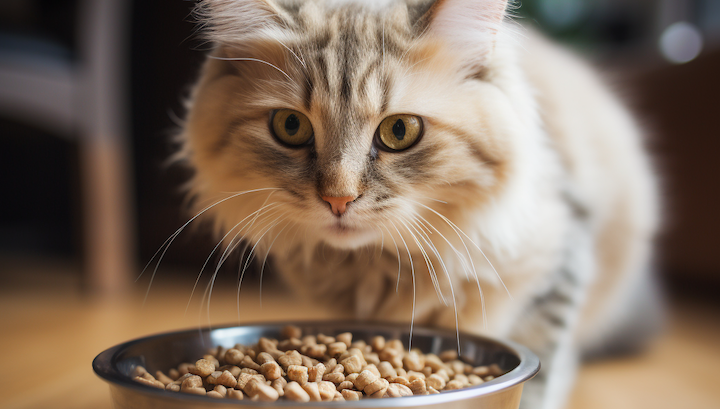
Understanding Dry Cat Food
Dry cat food, commonly referred to as kibble, is characterized by its low moisture content, typically around 6-10%. This food form is created through a process called extrusion, resulting in crunchy, bite-sized pellets that can vary in shape, size, and color depending on the brand and formula. Kibble's convenience and shelf stability have made it a staple in many households, offering a practical solution for daily cat feeding routines.
Pros of Dry Cat Food
Choosing the right cat food is crucial for your pet's well-being, with dry cat food offering notable benefits for both convenience and health. Let's explore why kibble is a favored option for many cat owners.
- Cost-Effectiveness: Dry cat food is generally more affordable than its wet counterparts. This affordability allows pet owners to manage their budgets more effectively without compromising on the quality of their cat's diet.
- Longer Shelf Life: The low moisture content of kibble means it can last longer once opened, reducing waste and saving money over time. This feature is particularly beneficial for pet owners who prefer buying in bulk.
- Dental Health Benefits: The crunchy texture of dry cat food helps in maintaining oral health by reducing tartar buildup. Chewing on these kibbles can promote stronger teeth and healthier gums, contributing to the overall dental well-being of your cat.
Dry cat food merges ease and health advantages, making it a go-to for supporting your cat's diet and your lifestyle. Remember, each cat's needs differ, so consider mixing in wet food for hydration and consulting a vet for a tailored diet plan.
Cons of Dry Cat Food
While dry cat food offers numerous benefits, it's essential to consider its limitations to ensure a balanced diet for your feline companion. Here, we outline the primary cons associated with feeding your cat dry food, highlighting areas of concern for pet owners.
- Low Moisture Content: The minimal water content in dry food doesn't adequately support a cat's hydration, raising the risk of urinary and kidney diseases if not supplemented with enough water.
- Risk of Overeating: The ease of free-feeding can result in overconsumption, leading to obesity, especially in cats with lower activity levels or a tendency to eat when bored.
- Less Palatable: Some cats may find dry food less enticing than wet alternatives, posing a challenge for picky eaters or those with dental problems that make hard kibble difficult to chew.
Understanding these drawbacks is key to making informed choices about your cat's nutrition. It highlights the importance of monitoring your pet's water intake, managing portion sizes, and considering individual preferences and health needs. Incorporating variety into your cat's diet, such as mixing dry with wet food, and consulting with a veterinarian can help address these issues, ensuring your cat remains healthy and happy.
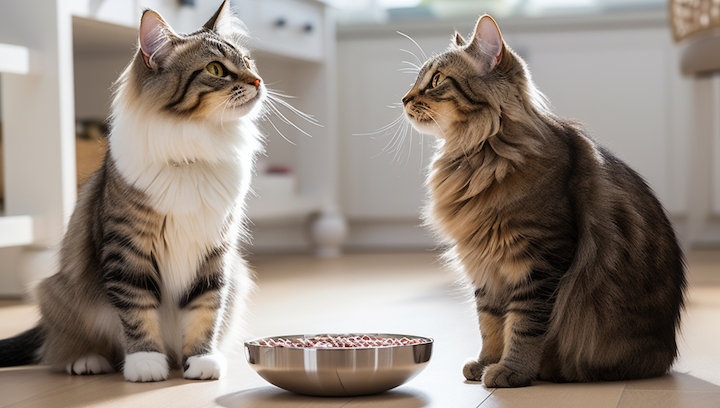
Making the Choice: Factors to Consider
When deciding between wet and dry cat food, several factors must be taken into account to ensure the choice aligns with both your cat's needs and your lifestyle. Understanding these elements can guide you towards making a well-informed decision that benefits your feline friend's health and well-being.
Cat's Health and Dietary Needs
Certain health conditions significantly influence whether wet or dry food is more appropriate for your cat. For instance, cats with urinary tract issues or kidney disease may benefit from the higher moisture content in wet food, which helps promote hydration and supports urinary health. Conversely, cats diagnosed with diabetes might require a diet lower in carbohydrates, which is often easier to manage with specific types of wet food formulations designed for such health concerns. Additionally, the soft texture of wet food can be advantageous for cats with dental problems or older cats who find chewing dry kibble difficult. It's essential to consider your cat's specific health needs when choosing their diet, possibly in consultation with a veterinarian.
Lifestyle and Owner Convenience
Your daily routine and lifestyle play a crucial role in choosing the most suitable type of cat food. Dry food offers unparalleled convenience, especially for pet owners with busy schedules, as it can be left out for cats to graze on throughout the day without spoiling. This is particularly beneficial if you're away from home for extended periods. On the other hand, wet food requires a more structured feeding schedule due to its perishability once opened, which might not suit everyone's lifestyle. Assessing your ability to maintain consistent feeding times is crucial when considering wet food for your cat.
Cost Implications
The financial aspect of feeding your cat cannot be overlooked. Generally, dry food is more budget-friendly and cost-effective, especially when buying in bulk. It offers a practical solution for pet owners looking to manage feeding costs without compromising nutritional quality. However, the price of wet food can add up over time, particularly for households with multiple cats or cats with specific dietary requirements that necessitate premium wet food brands. Evaluating the long-term costs in relation to your cat's size, appetite, and nutritional needs is essential to ensure that you're making a sustainable choice for both your budget and your cat's health.
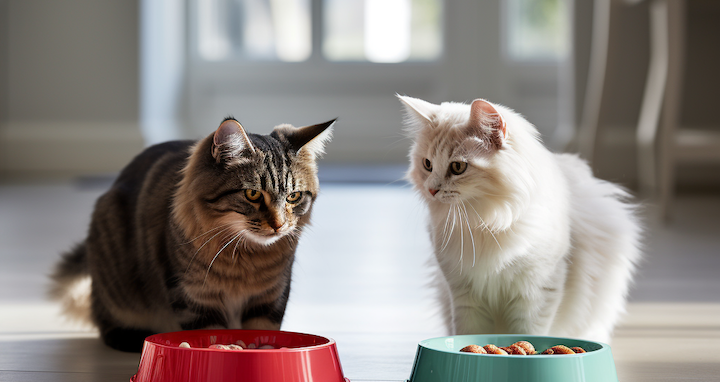
The Hybrid Approach: Combining Wet and Dry Foods
Adopting a hybrid feeding approach that incorporates both wet and dry cat foods can offer a well-rounded diet that capitalizes on the benefits of each type. This method not only provides the hydration benefits of wet food but also the convenience and dental health advantages of dry kibble. By mixing these foods, you can enhance your cat's diet with varied textures and flavors, which can stimulate their appetite and prevent feeding monotony, potentially leading to a happier and healthier feline.
When implementing a mixed feeding strategy, it's crucial to maintain nutritional adequacy and prevent overfeeding, which could lead to obesity. Here are some tips to strike the right balance:
- Follow Feeding Guidelines: Start by consulting the feeding guidelines on both the wet and dry food packaging. Adjust the portions of each to ensure you're not exceeding the recommended daily calorie intake for your cat's size, age, and activity level.
- Consider Caloric Balance: Keep in mind that wet food is often less calorie-dense than dry food. When combining, reduce the dry food portion to compensate for the added wet food to maintain a balanced caloric intake.
- Monitor Weight and Health: Regularly monitor your cat's weight and overall health to adjust the diet as needed. If you notice weight gain or signs of digestive upset, consider consulting with a veterinarian to fine-tune the feeding regimen.
- Schedule Feeding Times: If possible, set specific times for offering wet food to ensure it's consumed before spoiling, while leaving dry food out for grazing can offer flexibility around your cat's natural feeding habits.
This blended feeding approach, when done correctly, can contribute to a more engaging and nutritionally diverse diet, supporting your cat's health and satisfaction.
Final Thoughts
In navigating the choice between wet and dry cat food, we've explored the distinct benefits and drawbacks each option offers. Wet food, with its high moisture content, is invaluable for hydration and palatability, whereas dry food excels in convenience, affordability, and dental health benefits. The decision isn't about declaring a definitive winner but rather understanding how each type aligns with your cat's health requirements, dietary preferences, and your lifestyle.
The hybrid approach of combining wet and dry foods emerges as a balanced strategy, offering the best of both worlds to cater to your cat's nutritional needs while addressing practical considerations. However, the ideal diet varies significantly from one cat to another, influenced by factors such as age, health conditions, and personal taste preferences.
Ultimately, the well-being of your feline friend is paramount. Given the unique nature of each cat's dietary needs and the complex nutritional balance required, consulting with a veterinarian for personalized advice is crucial. A professional can help tailor a feeding plan that supports your cat's health, ensuring they lead a happy, active, and nourishing life.
FAQS:
How often should I feed my cat wet food?
The frequency of wet food feedings can depend on your cat's specific dietary needs, age, and health conditions. Generally, it's recommended to feed adult cats wet food twice a day. However, consulting with a veterinarian can provide guidance tailored to your cat's individual requirements.
Is dry food bad for cats' kidneys?
Dry food alone is not "bad" for a cat's kidneys, but cats fed exclusively dry diets may not get enough hydration, which could potentially contribute to kidney stress over time. Ensuring your cat has access to fresh water at all times and considering incorporating wet food can help support kidney health.
Can switching from dry to wet food cause diarrhea in cats?
Sudden dietary changes can sometimes upset a cat's digestive system, leading to diarrhea or other gastrointestinal issues. It's best to gradually introduce new food over a week, mixing it with the current diet in increasing amounts, to allow your cat's digestive system to adjust.
How can I ensure my cat stays hydrated if they only eat dry food?
Encouraging water intake is crucial for cats on dry food diets. Make fresh water available at all times, consider using water fountains to entice your cat to drink more, and you can also mix a little water into the dry food. Monitoring your cat's water consumption and discussing hydration strategies with a vet is advisable.
Can the type of food I choose affect my cat's behavior?
Yes, the food type can influence behavior. Cats with more energy may benefit from the higher protein content in wet food, while those needing weight management might do better with portion-controlled dry food to avoid overeating.
Are there any risks to mixing wet and dry cat foods?
Mixing wet and dry food is generally safe, but it's essential to balance the overall calorie intake to prevent obesity. Ensure the combination meets your cat’s nutritional needs without exceeding their daily calorie requirement.
Is grain-free cat food better for my cat?
Grain-free diets are not inherently better and may not be necessary unless your cat has a specific grain allergy or sensitivity diagnosed by a veterinarian. It's crucial to ensure that grain-free options still provide a balanced diet.
How does the nutritional content vary between wet and dry cat food?
Wet food typically contains more protein and fewer carbohydrates per calorie than dry food and has a much higher moisture content. Dry food often includes more grains and preservatives to maintain shelf stability. Reviewing the nutritional labels can help you choose a product that meets your cat’s specific needs.
